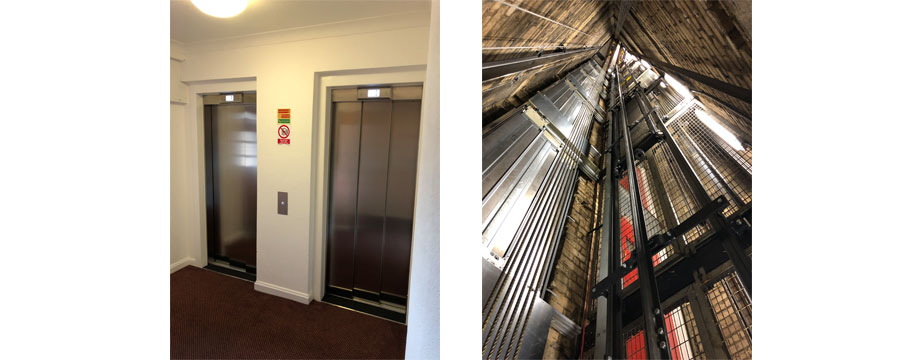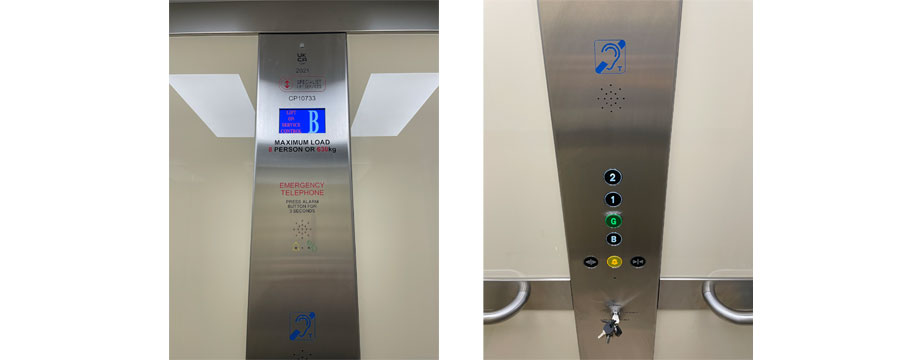 From January 23, 2023 all firefighter and evacuation lifts in high rise residential buildings are now subject to an additional new monthly check. Lee Dean director of LECS UK looks at the implications and new responsibilities for owners/ managers of high-rise buildings
From January 23, 2023 all firefighter and evacuation lifts in high rise residential buildings are now subject to an additional new monthly check. Lee Dean director of LECS UK looks at the implications and new responsibilities for owners/ managers of high-rise buildings
The Grenfell Tower Inquiry noted in the Phase 1 report that “When the firefighters attended the fire at Grenfell Tower, they were unable to operate the mechanism that should have allowed them to take control of the lifts.”
The Inquiry recommended that the owner and manager of every high-rise residential building be required by law to carry out regular inspections of any lifts that are designed to be used by firefighters and to report these results to the fire and rescue service at monthly intervals. They are also required to undertake tests of the mechanism that allows firefighters to take control of the lifts and to inform the fire rescue service monthly that they have undertaken.
For lifts that fall under the Fire Safety (England) Regulations 2022 (FSER), these regulations sit within the Fire Safety Order and make it a legal requirement for the ‘responsible person’ of a high-rise residential building (HRRB) to carry out these monthly routine checks of firefighter and evacuation lifts.
Where responsible persons identify, either through the monthly checks or via any other routine checks, that a relevant lift or mechanism has a fault or is out of service, they must report it to the local fire and rescue service electronically.
The ‘responsible person’ will also be required to record the outcome of these monthly checks in an open and transparent way that is accessible to residents - e.g by posting them on a notice board or making them available to a resident’s association.
Lee Dean, director of lift consulting engineers, LECS UK (pictured) said: “It is important to know that these Regulations add to a ‘responsible person’s’ existing duties under the Fire Safety Order in relation to mid- and high-rise apartment buildings, and also require them to provide information to the fire and rescue services so they can plan their operations and take additional safety precautions.
“The monthly assessment is to check that firefighter and evacuation lifts are in good repair and in efficient working order. Importantly, these checks can be carried out by the ‘responsible person’.“
All lifts, including secondary or back up power supplies, as well as any other fire-fighting equipment are already be subject to a suitable programme of maintenance and inspection. These checks are designed to be executed by a building owner or responsible person i.e. there is no legal requirement for a lift-specialist to carry out these checks, and include:
Weekly & monthly routine check (functionality):
This is to check that the recall and alarm functions are working correctly.
It also tests the operation of the evacuation and firefighters lift switches.
Monthly routine checks (secondary power supplies):
This involves simulating a failure of primary power and changeover to secondary power supply. If a generator provides the secondary power supply, it should energise the lifts(s) for at least one hour.

Owners and managers of buildings with these types of lifts may not be aware of or prepared for this regulation change. Identifying the ‘responsible person’, the types of lifts and the methodology in carrying out checks can be confusing.
A building’s owners/managers or other ‘responsible person’ must be able to:
• Identify evacuation and firefighters lifts(s)
• Know how to carry out and record routine checks
• Know how to check secondary power supplies. This may need attendance by an electrical engineer
• Know how to activate building fire alarms / BMS system (This may need a fire engineer in attendance)
• Carry out routine checks in accordance with BS 9999, Annex I / BS 8899 and FSER 2022
• Provide notification of any fault
• Provide documented evidence
It also helps staff understand why these checks are being carried out if the responsible person can also provide guidance on the theory behind the checks.

Lee Dean LECS UK said: “While these new regulatory requirements do not need a lift-specialist to carry out the checks it can be difficult, at least at first, for the responsible person to know exactly how to discharge their responsibilities as required by the law. In this regard, our team is happy help with specially developed on-site training and advice available.”
The annual operational inspection check is slightly different, in that it is typically carried out by a competent person, or other person with specialist lift and fire/evacuation related knowledge. For the annual operation inspection a ‘competent person’ is required. These inspections involve an annual performance test of various items of fire-fighting plant, including evacuation and fire-fighting lifts along with all the necessary documented evidence.
LECS UK is an award-winning team of independent lift consulting engineers specialising in lifts, escalators and all forms vertical transportation.
Images ©LECS UK
- Log in to post comments













